GES 121 - Precipitation and Lifts
1/7
There's no tags or description
Looks like no tags are added yet.
Name | Mastery | Learn | Test | Matching | Spaced |
|---|
No study sessions yet.
8 Terms
For Precipitation to Occur
there needs to be growth of droplets, sufficient size to fall
almost all precipitation in mid-latitudes begins to fall from cloud as snow
cirrus clouds can seeds lower clouds with ice crystals
if colder than 4°C at the surface, most likely snow because not enough time to melt; if warmer, probably rain.
as it falls, rain will evaporate
Types of Precipitation
Rain:
liquid droplets that reach ground, >.5mm
likely to be continuous, intermittent called a shower
usually starts as snow but melts on the way down
don’t usually get larger than 7mm in diameter
Drizzle:
liquid droplets that reach ground, <.5mm
likely to be continuous
tends to fall more slowly because of smaller particle size, and therefore will restrict visibility more than rain
Snow:
ice crystals that have not melted
Sleet:
frozen rain - opaque ice pellets
melts from warm air, then falls through thick layer of cold air at the surface, which freezes solid
snow → (melting) → rain → (freezing) → sleet
Hail
ice pellet, >5mm in diameter
forms because of multiple passes through a cloud, number of passes determines size (and often collides with other hail stones)
Freezing Precipitation
(rain or drizzle) that freezes with surfaces at or near the ground
the pure precipitation is supercooled in a shallow layer of cold air at the surface, and freezes as it hits the dirty surface
rime - dangerous, pure ice
can also be danger to plane wings when flying through supercooled clouds
Graupel / Ice Pellets (“soft hail”)
crystalline/snow-like internal structure with ice coating around it
fluffy inside, crunchy outside. yum!
partial melting and coalescence of snow with refreezing
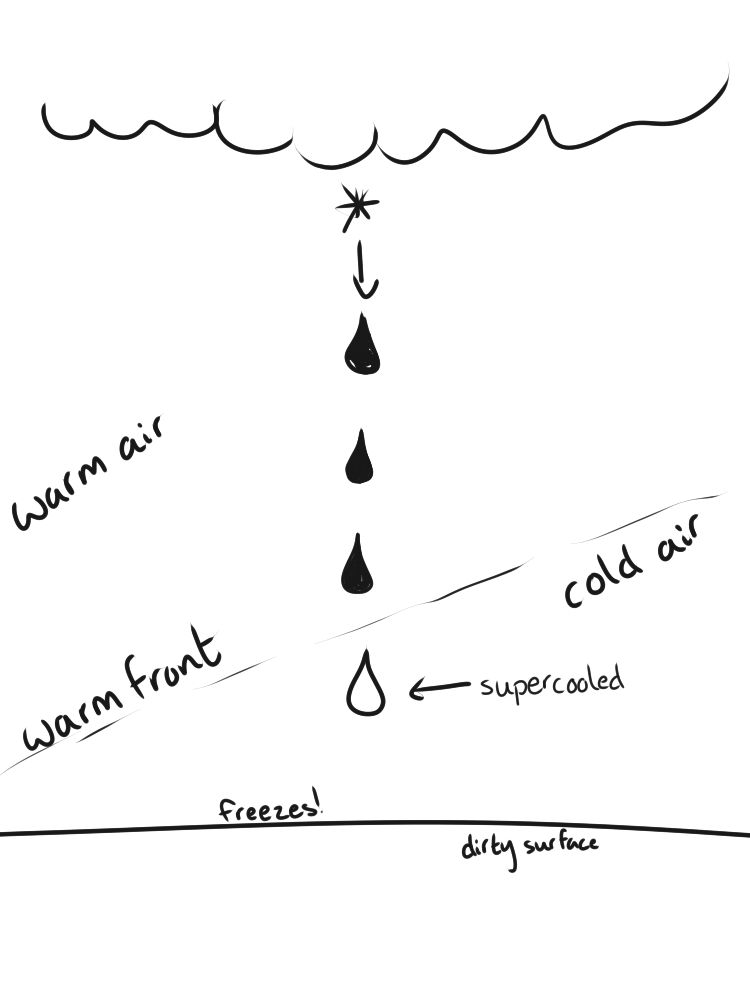
Intensity of Precipitation
may fall either:
continuously
longer period, ~hour or more
intermittently
shorter period, limited in both time and space
shower as rain, flurry as snow
may be described as:
very light (slight)
light
moderate
heavy
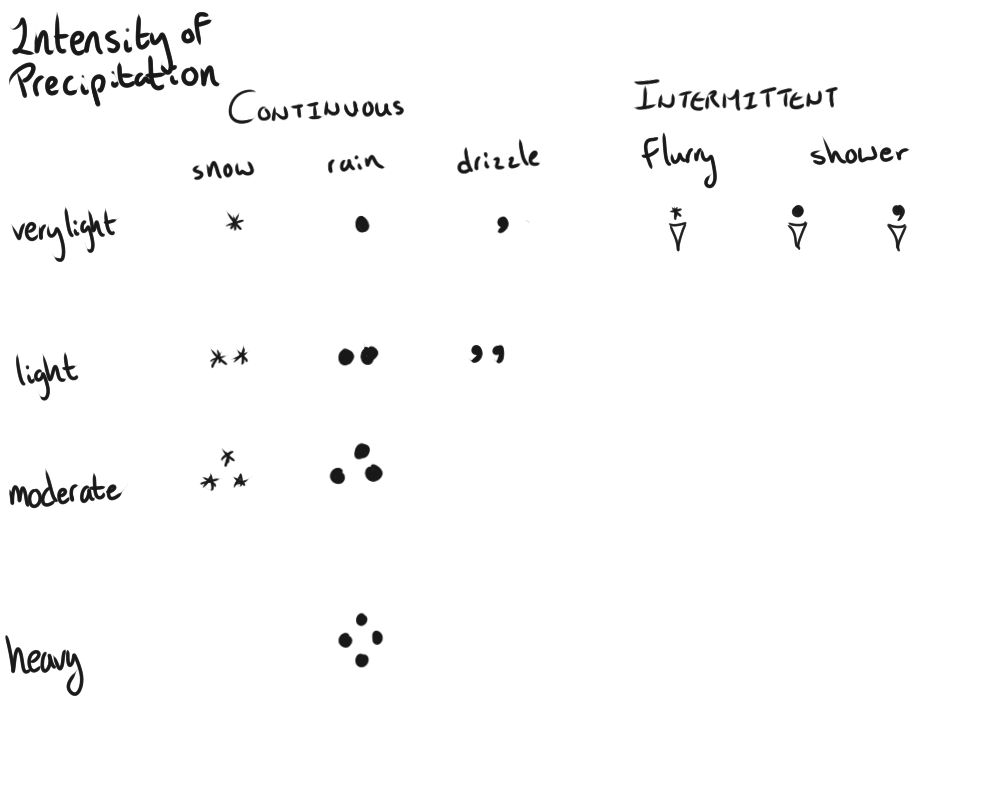
Lifting Mechanisms
lifting humid air to greater heights (cooler temperatures) is essential for the formation of precipitation
Lift → Condensation → Cloud → Precipitation
4 Types of Lift Mechanisms
Convergent
Mechanical (Orographic)
Convective
Air Mass Frontal
Convergent Lift
air moving towards one another, towards particular point/line and then must go upwards
typically large scale, surface low pressure
Intertropical Convergence Zone (ITC)
often what drives tropical storms (hurricanes/typhoons/cyclones)
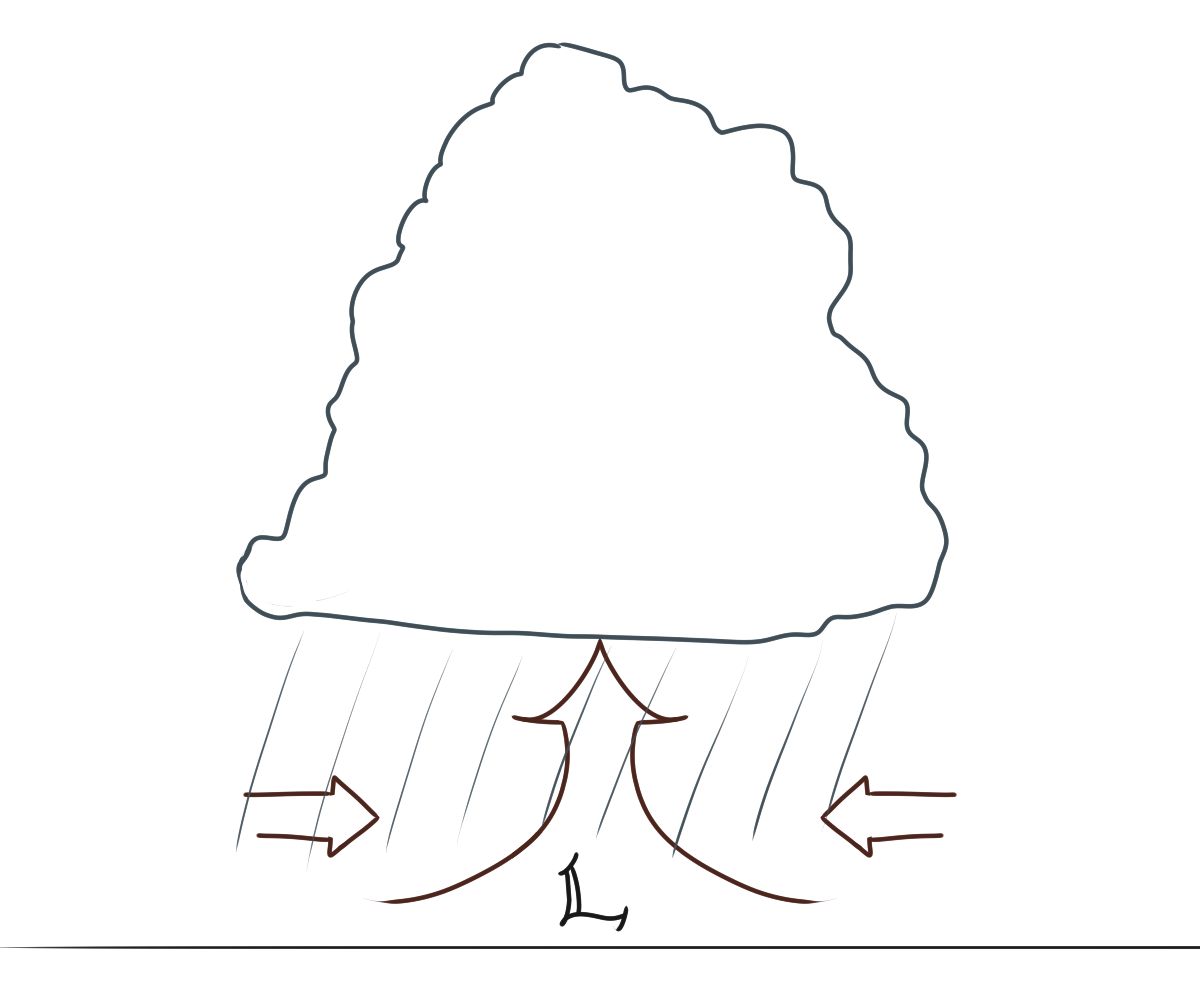
Mechanical (Orographic) Lift
“oro” means mountain
over top of landscape barriers, adds energy to clouds, SALR
windward slope (faces wind) tends to be a wet slope - “rain shed”, warm/moist
lots of the precipitation is removed as it travels up, but the energy/heat is still there
on the leeward slope, it descends adiabatically into warming air, into the “rain shadow”/sheltered side, hot/dry
ex. Victoria Island gets 3 meters of rain a year (very wet), interior of BC is very dry (semi-arid)
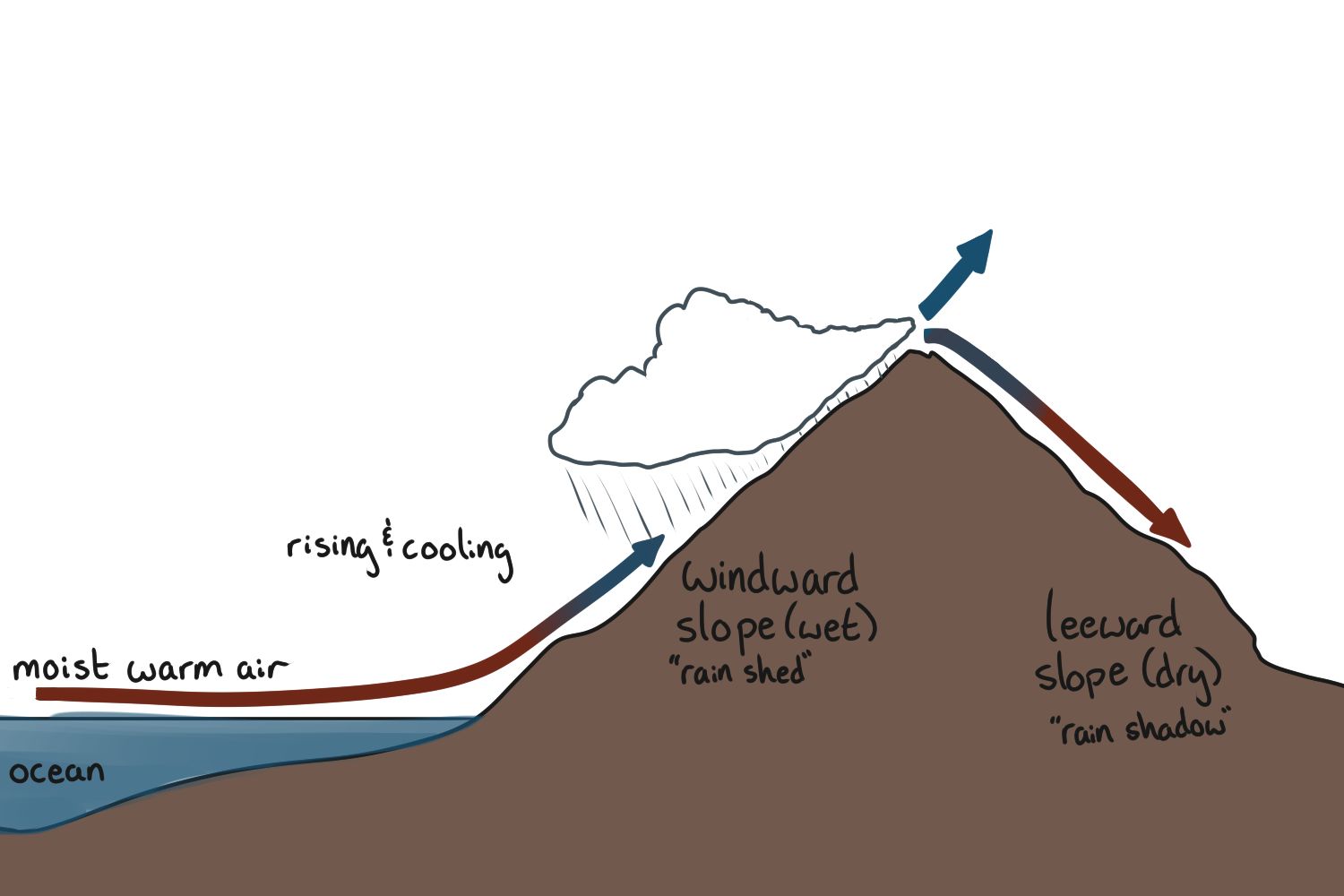
Convective Lift
surface heating, density differences, rising thermals of air
very few cumulus clouds last more than 20 minutes (because cuts off insolation of the surface, so can’t get more latent heat energy from there)
but if there’s lots of Lift, latent heat input with moisture within the cloud keeps it lifting, so last longer
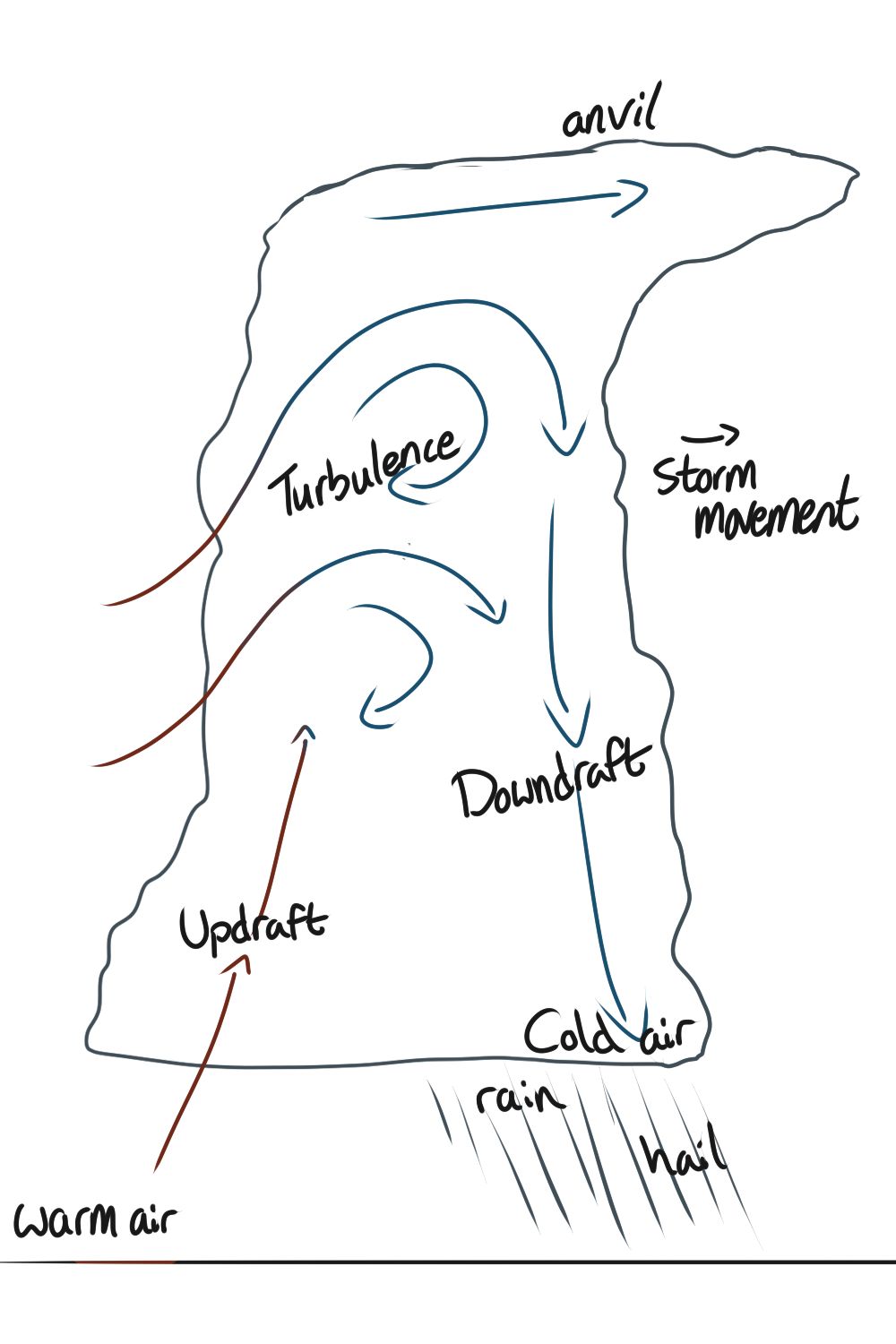
Air Mass Frontal Lift
based on concept of air masses
air mass: region of relatively homogeneous air (so all one character), described by its temperature and moisture content (fairly uniform temp, humidity, stability)
forms because air sits over a surface for a while (at least a few days) and takes on those characteristics
ex. Gulf of Mexico → warm/moist
ex. Northern Canada winter → cold/dry
not static, moves around
at some point, air masses will meet, and forms an air mass front
front: boundary between two dissimilar air masses
